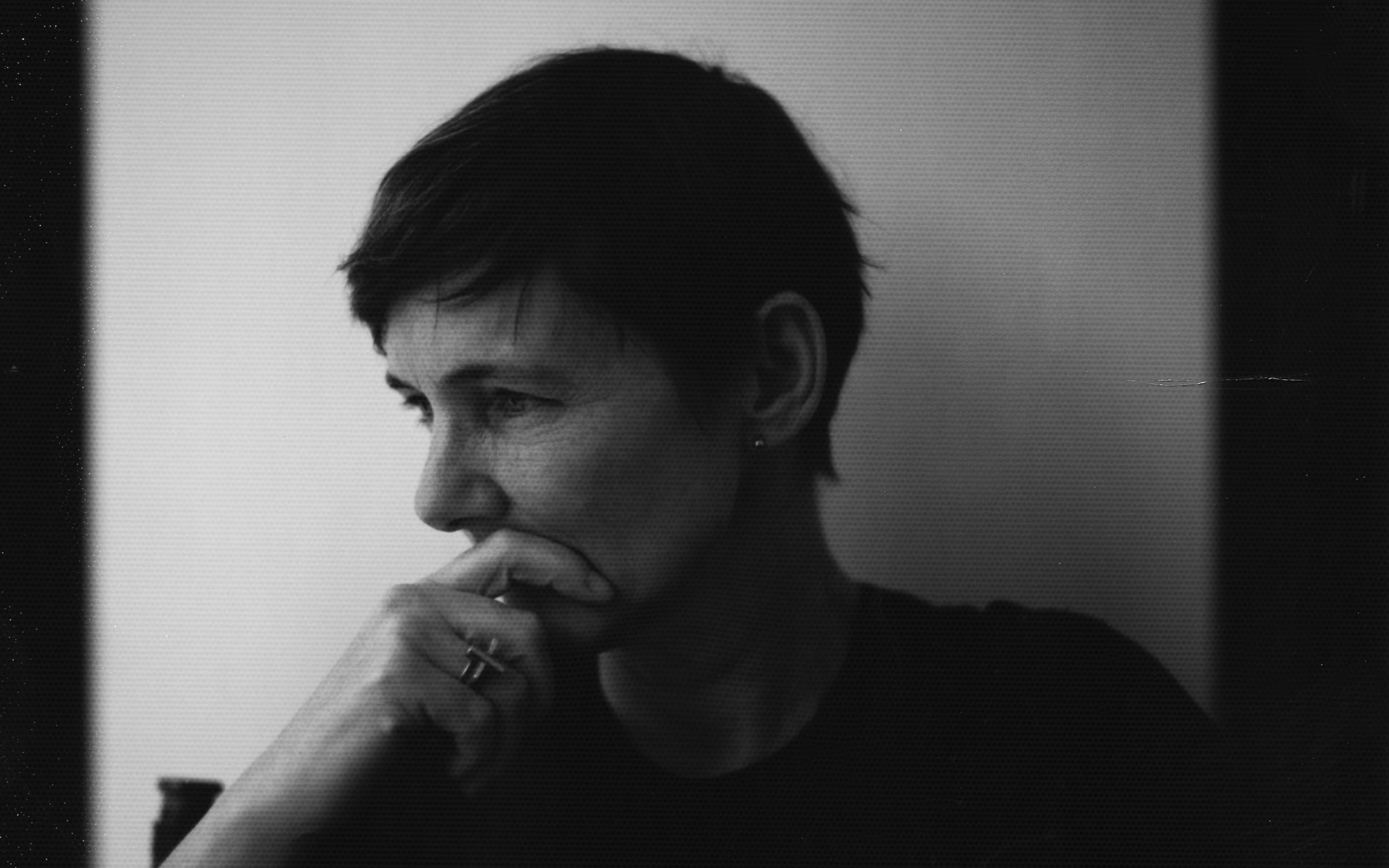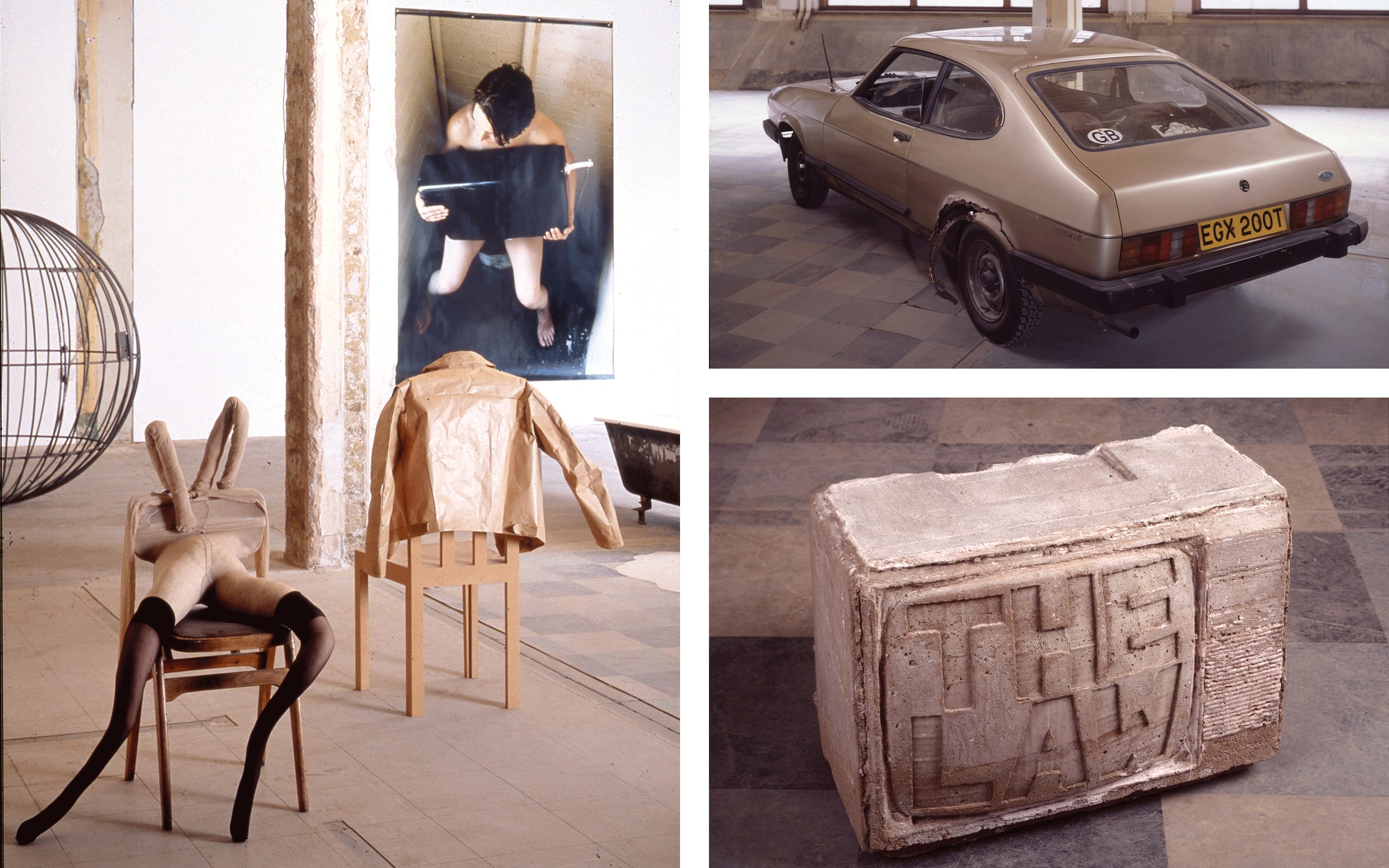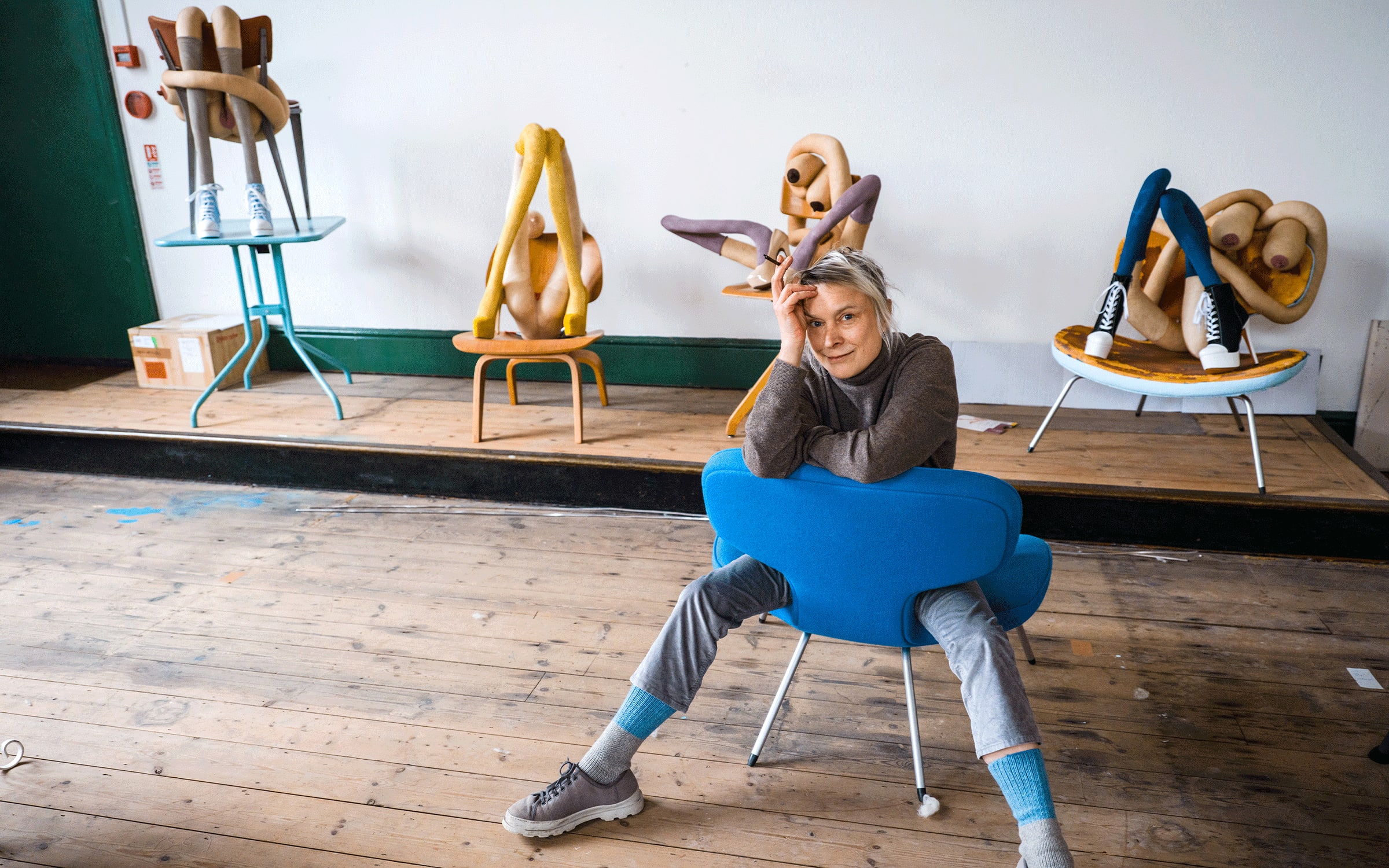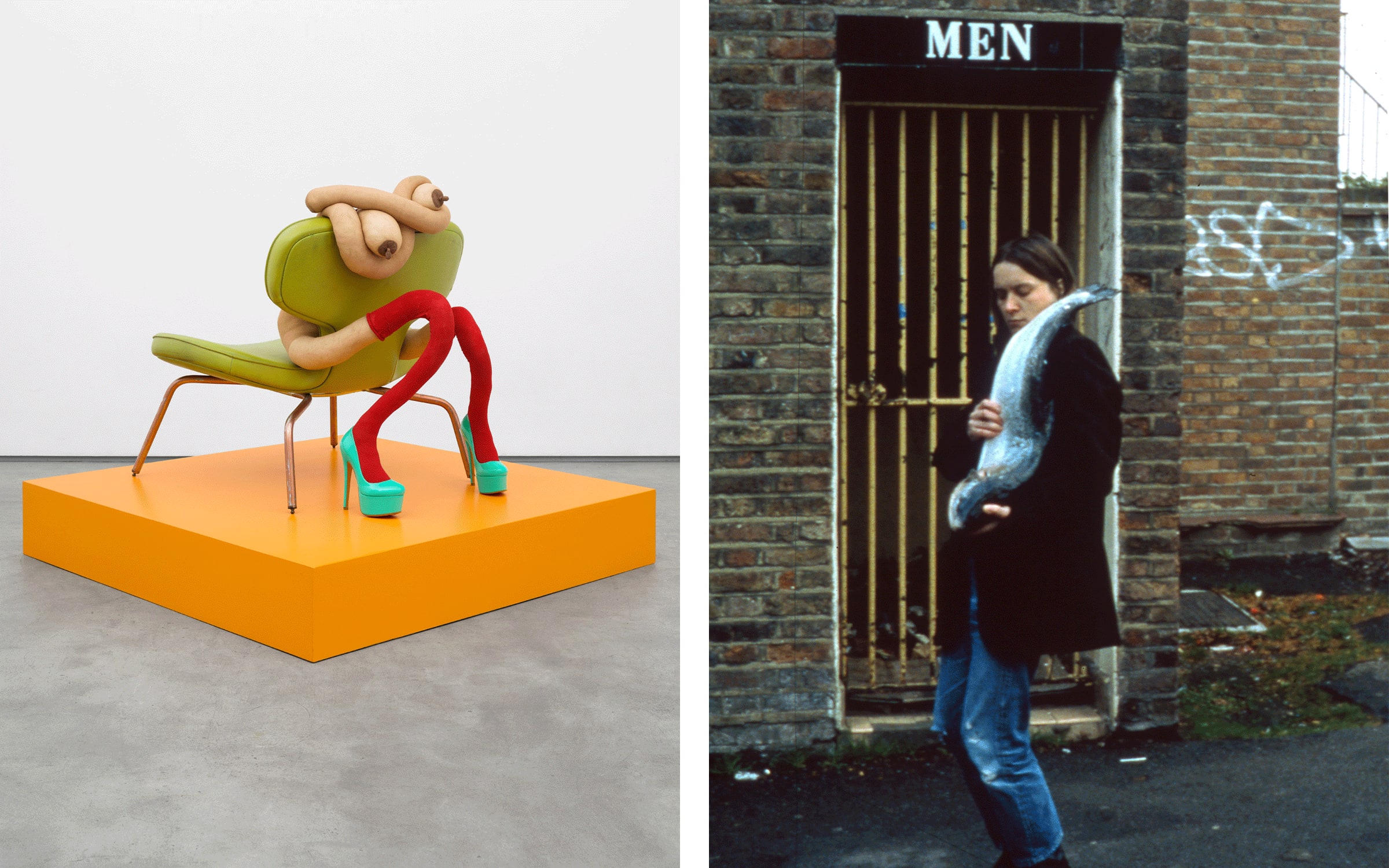For the fourth installment of Pierre-Alexandre Mateos and Charles Teyssou’s series of interviews focusing on iconic exhibitions in commercial galleries, the curator-duo talks to London gallerist Sadie Coles. They discuss her friendship with British artist Sarah Lucas and the origins of the groundbreaking off-site show ‘The Law’ which launched Coles’s London gallery in 1997.

Pierre-Alexandre Mateos and Charles Teyssou: How did you meet Sarah Lucas?
Sadie Coles: I first met Sarah in 1990 during a gallery dinner in London organized for a Jannis Kounellis exhibition. At that time, I was working for the major British art dealer Anthony d’Offay. Sarah was sitting at the young artists table with her then-boyfriend Gary Hume; I was completely captivated by her energy and unconventional attitude. She was so charismatic and funny, and empowered somehow. That was the beginning of our friendship.
Later, Sarah presented several of her earliest and most visible projects – including the incredible 1992 show ‘Penis Nailed to a Board’ – at City Racing in South London, a not-for-profit artist-run gallery. She also did a pop-up in a Soho shop called ‘The Whole Joke’ with her piece Two Fried Eggs and a Kebab (1992).

Then, at some point, Anthony d’Offay invited me to curate a project in a small garage that he had at the back of one of his galleries. Sarah was one of the first artists I thought of, and I asked to present her 1994 project ‘Got a Salmon On’. After that, I left d’Offay and moved to New York. Around that time, Sarah was finishing her project with Tracey Emin: ‘The Shop’.
I was thinking about what I should do next, and Sarah said that it would be a good idea if I came back to London to start working with her. I opened my gallery in 1997 and the first show I did was with Sarah: ‘The Law’ in 1997 at St John’s Lofts in Clerkenwell.
Retrospectively, this show seems to gather all of her most important series: the tabloid collages, the domestic and anthropomorphic sculptures, and finally some more abstract and abrasive sculptures such as The Globe (1997) or Down Below (1997).
Because it was staged in an industrial building, the scale of the show was ambitious. It allowed Sarah to recognize and develop her formal vocabulary. For example, Bunny (1997) is the precursor of all her soft figurative sculptures, and it became maybe a signature motif that has continued to evolve. The versions she has made in recent years have taken on a new mood of audacious individualism, but still retain the captivating vulnerability of the very first.
The photographic self-portrait, Fighting Fire with Fire (1997), was developed on a much larger scale in that exhibition and Sarah added paint on top of the repeated image. The car sculpture in that show indicated her appropriation of a powerful metaphor of masculinity, and she has made several car sculptures since. In the recent New Museum show, there was a new one covered in cigarettes.
‘The Law’ was also about pushing back against authority, refusing to be told what the rules are. It was an expression of transgression, a refusal to stay in your place as a woman, and specifically as a working-class woman. It was also demonstrating Sarah’s resistance to accepting the status quo, with some of the works specifically against conservative propaganda in the media. Many of those issues have remained central to Sarah's thinking and have developed over her career.
Lucas employs a sort of social naturalism – almost grungy – and she is also one of the few Young British Artists (YBAs) of the 1990s to talk about her precarious condition and bohemian lifestyle. In that sense, would you say that her aesthetics are typically and satirically British in a timeless way, between Charles Dickens and Generation X?
The label of the YBAs wasn’t clear in the mid-nineties – what was clear was that everybody was friends. It was a tiny scene in London, and there was a lot drinking and partying together, after openings, in studios, in pubs. Everybody knew what other people were making. The glue that held everybody together was art school and the social network that expanded from that. There were only a few galleries and a few collectors. It was about being a community but not necessarily about a shared idea, a shared worldview, a shared way of making your work, or a shared use of materials. Everybody was doing things quite differently and success or exposure came to people at different speeds and to different degrees.

Sarah always stood out to me because in her work you get this authentic social realism but with true pathos. Her use of metaphor is precise and economic, and her employment of surrealism is unpretentious and sophisticated. People sometimes make assumptions that there is no skill or subtlety, which amazes me. Sarah’s poetry is pared down and tells it like it is, but it is not like you just put a toilet in the middle of the room; there’s always another intervention or suggestion. It’s the combination of what she does with that harsh realism: the materials, the title punning that describes and embellishes the work, the additional spin of deflecting humor, the pathos, and the contextualizing installation.

As you said, Sarah’s subject matter is very British – she has an almost nostalgic relationship towards British culture, but specifically the postwar generation of her parents which was defined by moral duty, pragmatism, and hard work. It completely predates the 90s period or punk. Sarah wasn’t into Britpop. She was more into Prog Rock: Can, Led Zeppelin, Funkadelic, and artists like that. I felt her work was more a reaction to the postwar period of her parents and her North London upbringing. I do think of her as a literary person, self-taught and diligent in her reading, and her specific observations of Britishness, with all of its difficult contradictions and unspoken class and sexual bias, could be seen as in the Dickensian tradition. You can see this in the double-edged insinuation of her sculptures of foods such as sandwiches, pies or the enlarged marrows Florian and Kevin (both 2013) that recall both the smooth contouring of Modern British sculpture and at the same time Harvest Festival fair traditions of ‘a prize for the biggest'. But her viewpoint also includes Shakespearian ribaldry, Beckett’s surreal abstractions, and the humorous humanity of Chaucer’s moral tales.
Curator-duo Pierre-Alexandre Mateos and Charles Teyssou organized the Conversations program for the inaugural edition of Paris+ par Art Basel.
Caption for full-bleed images, from top to bottom: 1. Installation view of Sarah Lucas’s exhibition ‘The Law’, Sadie Coles HQ off-site, St Johns Lofts, London, 1997. © Sarah Lucas, courtesy of Sadie Coles HQ, London. 2. Sarah Lucas, Florian and Kevin, both 2013, in exhibition ‘Delirious’, Lustwarande, Netherlands, 2019. Photograph by Gert Jan van Rooij © Sarah Lucas, courtesy of Sadie Coles HQ, London. 3. Sarah Lucas, Auto-erotic, 1997 © Sarah Lucas, courtesy of Sadie Coles HQ, London. 4. Installation view of Sarah Lucas’s exhibition ‘Au Naturel’, New Museum, New York, 2018-2019. © Sarah Lucas, courtesy of Sadie Coles HQ, London.